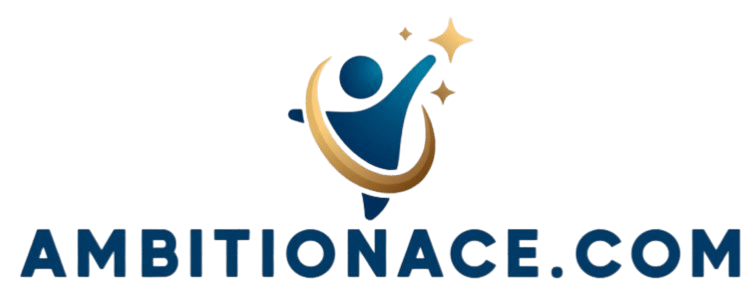Effective Use of Checklists for Tasks
Checklists are invaluable tools that can transform the way you manage your tasks. They ensure both efficiency and accuracy in your daily routines.
In this article, you ll discover how checklists can enhance your productivity and minimize costly errors. You ll explore the different types of checklists simple and complex and gain insights on how to create one that truly works for you.
Discover practical tips for incorporating checklists into your daily life. Learn about common pitfalls to avoid for maximum effectiveness. Dive in and uncover how checklists can elevate your task management to new heights!
Contents
Key Takeaways:

- Checklists boost efficiency and accuracy by keeping tasks organized.
- Simple checklists are suitable for routine tasks, while complex checklists are beneficial for more intricate responsibilities.
- Key elements to consider when creating an effective checklist include simplicity, specificity, and regular review.
What are Checklists?
Checklists are your structured allies, carefully designed to enhance your organizational efficiency. They help ensure that no essential tasks slip through the cracks. Checklists play a vital role across various domains, including aviation, healthcare, and manufacturing.
These tools offer a systematic approach to task management, allowing you and your team to execute responsibilities with clarity and accountability.
As Atul Gawande illustrates in “The Checklist Manifesto,” using checklists can significantly lighten your mental effort and refine your decision-making processes. They provide a dependable framework for tackling complex tasks.
The significance of checklists goes beyond simply ticking off tasks; they influence quality control and safety protocols in various industries. Whether in surgical settings or project management, these visual aids guide you through intricate processes and minimize the risks associated with human error.
Cognitive psychology supports the idea that checklists enhance memory retention and focus, crucial for implementing systematic fire protection measures.
By fostering a culture that values methodical practices, you streamline operations and strengthen compliance and accountability. This leads to improved outcomes across the board, making a measurable difference in your organizational success.
Benefits of Using Checklists
Using checklists brings numerous benefits that elevate organizational efficiency, reduce errors, and streamline processes. This is especially important in healthcare and manufacturing, where systematic procedures are vital for safety and consistent performance.
By providing clear action steps and opportunities for feedback, checklists become essential tools in risk management. They enable teams to collaborate effectively while reducing mental effort in executing complex tasks.
Embracing this practice ensures you can navigate challenges with precision and confidence.
Improving Efficiency and Accuracy
Implementing checklists can significantly elevate your efficiency and accuracy in executing tasks. They provide a systematic approach to task sequencing and prioritization, reducing the risk of oversight while enhancing quality control. To learn more about this valuable tool, check out how to use checklists effectively.
Using tools like digital checklists or Computerized Maintenance Management Systems (CMMS) ensures every action step is accounted for. This simplifies complex processes and facilitates informed decision-making.
These tools promote a clearer workflow and allow for real-time updates and adjustments, keeping all team members aligned on priorities and deadlines.
Accessing a centralized digital checklist makes collaboration more effective and tracking progress seamless. Incorporating features like automated reminders and status updates minimizes delays and boosts accountability.
By employing these methods, your organization can maintain high standards of quality control while driving continuous improvement through the systematic identification of process bottlenecks and opportunities for refinement.
Start using checklists today to experience immediate benefits in your task management!
Types of Checklists

Checklists can be elegantly divided into two categories: simple and complex. Each type serves a unique purpose and addresses different levels of task complexity, enhancing your ability to analyze and customize tasks to meet your organizational needs.
Simple checklists are designed to be user-friendly, streamlining routine tasks without causing unnecessary overwhelm. In contrast, complex checklists demand a more structured approach, accommodating the intricate requirements of project management.
Simple vs. Complex Checklists
Simple checklists are your go-to for straightforward, routine tasks, while complex checklists delve into detailed processes that demand adaptability and meticulous task management. Utilizing checklists for goal tracking ensures successful execution and minimizes errors.
The decision between simple and complex checklists hinges on the intricacy of the tasks you face and the level of detail necessary to achieve your desired results.
Take a home setting, for example. A simple checklist works perfectly for daily chores like grocery shopping or tidying up, focusing solely on essential items. On the flip side, in a medical environment, a complex checklist becomes invaluable during procedures like surgery, where a meticulously detailed sequence of actions is crucial for patient safety.
These complex checklists often feature specialized categories and nested items, ensuring that nothing critical slips through the cracks and effectively reducing risks. By discerning when to use each type, you and your team can optimize efficiency and effectiveness, ultimately streamlining operations and achieving superior results.
Creating an Effective Checklist
Crafting an effective checklist demands thoughtful attention to essential elements like clarity, accountability, and customization. Your checklist must directly address the specific needs of the task at hand while also fostering quality control.
A well-designed checklist becomes a formidable ally in project management. It guides you seamlessly through each necessary action step, enhancing your task management outcomes.
Key Elements and Considerations
When crafting your checklist, consider key elements like keeping information clear and manageable, breaking tasks into smaller steps, and user-friendliness to enhance efficiency and clarity. Focusing on these aspects elevates team coordination and streamlines processes, making it easier for users to tackle their tasks.
Keeping information clear and manageable is crucial; it prevents overwhelming users with excessive information. By effectively breaking tasks into smaller steps, you can ensure a smoother journey toward achieving the overall goal.
A user-friendly design, marked by clear language and intuitive formatting, encourages engagement and minimizes confusion. Altogether, these elements foster better collaboration among team members and enhance performance, allowing users to systematically address their responsibilities and drive success across various projects and workflows.
Using Checklists for Task Management

Utilizing checklists for task management elevates your organizational efficiency while also promoting seamless collaboration among your teams. This approach allows for effective goal setting and facilitates real-time tracking of progress through mobile applications and other digital tools. To further enhance your productivity, consider learning how to use checklists to combat procrastination.
By bridging communication gaps, it ensures accountability in task execution, ultimately enhancing performance outcomes across diverse sectors.
Start creating your checklist today for better task management!
Tips for Incorporating Checklists into Daily Tasks
Incorporating checklists into your daily tasks can greatly improve your time management. Following best practices for using checklists is key for effective use.
Establishing a routine for your checklist and regularly refining its content will ensure that it remains relevant and valuable for your daily activities.
To maximize the benefits of checklists, start by categorizing your tasks according to priority think daily, weekly, or long-term goals. This method streamlines your activities and instills a gratifying sense of accomplishment.
For example, if your goal is to boost your productivity, consider a morning checklist featuring essential tasks like:
- Replying to emails
- Attending meetings
- Setting aside time for brainstorming
Using digital tools like mobile apps provides reminders and allows you to track task completion. This fosters a sense of accountability. By seamlessly integrating checklists into your routines, you can unlock the full potential of your productivity!
Common Mistakes to Avoid
Avoiding common mistakes in checklist creation and usage is essential for maximizing effectiveness. These pitfalls can impede error reduction and compromise performance consistency within your teams.
By addressing issues like lack of clarity, poor task sequencing, and failure to incorporate feedback, you can ensure your checklists become invaluable tools in your operational processes.
How to Prevent Errors and Improve Checklist Effectiveness
To prevent errors and elevate the effectiveness of your checklists, it s essential to incorporate feedback into their design. This approach allows for continuous task analysis and adaptation to your needs while effectively managing how much information your brain can handle at one time.
A proactive stance enhances the reliability of your checklists and cultivates a culture of accountability and precision within your team.
Regularly gathering input from team members enables you to pinpoint common pitfalls and identify areas ripe for improvement. Breaking down complex tasks into smaller, manageable steps can further streamline the checklist process, making it easier to follow through without feeling overwhelmed.
Implementing iterative revisions based on feedback ensures your checklists evolve alongside workflow changes. By utilizing checklists as a collaborative tool, you encourage team discussions that lead to a shared understanding of best practices, ultimately driving productivity and minimizing the likelihood of mistakes.
Frequently Asked Questions

What is the importance of using checklists for tasks?
Using a checklist helps ensure that all necessary steps are completed. This reduces the chances of forgetting important details.
How can checklists improve productivity?
Checklists can prioritize tasks and provide a clear structure for completing work. This eliminates the need to constantly remember tasks, leading to increased productivity.
What are some tips for creating an effective checklist?
Keep the checklist simple, specific, and organized. Use clear, concise language and include all necessary steps for the task at hand.
How often should checklists be reviewed and updated?
Regularly review and update checklists to reflect any changes in the task or process. This way, the checklist remains effective and relevant.
Can checklists be used for all types of tasks?
Yes, checklists can be used for a wide range of tasks, from simple daily routines to complex projects. They can be customized to fit the specific needs of each task.
How can checklists help with quality control?
By providing a step-by-step guide, checklists ensure consistency and accuracy in completing tasks, leading to improved quality control.






